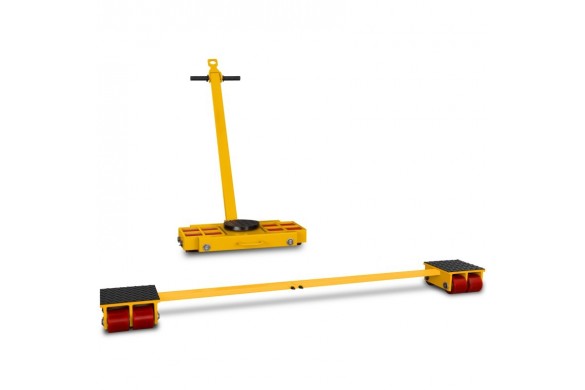How do you remove rust from hard-to-reach areas?

The issue of corrosion affects many branches of industry, especially where metal components are exposed to moisture and air. How to remove rust from hard-to-clean areas? You will find the answers in this article. We present both traditional methods and modern ways to remove rust from metal (including the use of laser). You will also learn how to protect metal after removing corrosion to prevent its return.
Rust – how it forms, rate of development, exposed surfaces
Rust is the result of corrosion, a chemical process occurring on the metal surface due to contact with moisture and oxygen. In the presence of salts or air pollutants, this process accelerates, leading to material degradation. The most susceptible to corrosion are iron-based metals, such as steel or cast iron, as well as surfaces not protected by protective coatings. Industrial machine components, such as sheets, moving parts, or precise mechanisms, can be particularly prone to rust in environments with increased humidity, high temperatures, or constant contact with water.
How to remove rust from metal?
Effective rust removal requires choosing the right method, tailored to the type of metal, the degree of corrosion, and the nature of the surface. In many situations, traditional methods such as mechanical and chemical cleaning work well, but the greatest effectiveness in industrial applications is ensured by modern technologies, such as laser rust removal. Below are the most popular ways to remove rust from metal surfaces.
Mechanical rust removal
Mechanical rust removal involves grinding it off the surface using tools such as grinders, wire brushes, or cabinet blasters. Metal grinders allow quick and effective cleaning of large surfaces but require precision to avoid damaging the material. On the other hand, cabinet blasters are suitable for parts with irregular shapes or hard-to-reach places. The disadvantage of this method is the risk of excessive material abrasion and the need for manual access to the cleaned areas.
Chemical rust removal from metal
Chemical methods use specialized agents that dissolve rust. These agents are applied to the surface and then washed off with water or neutralized. This process works well for delicate components such as sheets or precision parts. However, it is important to remember that the use of chemicals requires compliance with safety regulations and proper preparation of the workstation. This method is less effective for removing rust from hard-to-reach areas.
Laser rust removal
Laser rust removal is the most advanced and precise method used in the industry. Laser cleaners for rust emit a concentrated beam of light that effectively removes corrosion without affecting the structure of the metal. The process is contactless, minimizing the risk of damaging the material. Compared to traditional methods, laser rust removal is faster and more environmentally friendly. It is the best way to remove rust from hard-to-reach areas.
Cleaning lasers, available from the industrial machinery manufacturer CORMAK, are perfect for removing corrosion from precision machine components, such as turbine blades or gears. They have adjustable operating parameters, allowing the intensity of the beam to be adapted to the type of surface being treated. Laser corrosion removal requires no chemicals or abrasives, reducing operating costs and environmental impact.
How to protect metal after rust removal?
After removing the rust, it is crucial to properly protect the surface to prevent it from recurring. The most commonly used methods are:
-
applying protective coatings – painting with anti-corrosion paints or varnishes;
-
galvanization – applying layers of corrosion-resistant metals, such as zinc or nickel;
-
impregnation with oils or greases – effective for moving parts, such as industrial machine components.
It is worth remembering that proper protection of the metal affects its durability and performance. In the range of metalworking machines, there are tools that support the process of protection and surface preparation.
Summary
How to get rid of rust from metal? In many cases, for example in home workshops, traditional methods such as mechanical abrasion or chemical agents are sufficient. In industry, however, the most effective option is a laser. Laser rust removal enables precise cleaning even of hard-to-reach areas, while ensuring protection of the treated surface. Thanks to advanced devices such as laser cleaners available from CORMAK, the process is quick, ecological, and economical.
If you are wondering how to remove rust from sheet metal or prepare a surface for further processing, choose reliable solutions from the experts. In our range, you will also find metal lathes, metal milling machines, metal grinders, and cabinet blasters, which will help you ensure the highest quality of every project.





